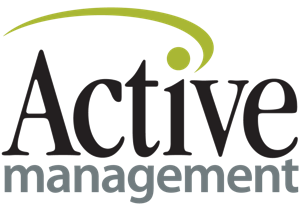How To Create a Team That Excels Your Business

Our last few blogs have all been about recruitment – the ‘how to recruit’ more specifically. What’s often not talked about in the fitness industry is what do you need to recruit to create a team that excels? I am not talking about team culture, that’s coming next edition. I am talking about a team that produces results, has clear job descriptions and who can harmonise working to their strengths.
When we look at the research for “high performance teams” there are a lot of results and a lot of research conducted from a corporate setting. However most fitness facilities are much less corporate in their approach and I believe there are some fundamental lessons we can take from other industries that can help teams excel. The biggest 3 factors that affect performance in teams in any workplace are relatedness (culture), competency and autonomy. Today we will delve into what competency and autonomy look like in teams in the fitness industry.
Competency stems from the assuredness one has to perform their role in a sufficient and successful way. However there are two parts to competency. The first being the expectations laid out by the employer to the employee on how to conduct themselves and how to achieve results in their role. Working as a PT in big-box for many years, most of the time ‘competency’ was measured by a trainer’s ability to attain a certain number of sessions per month (rightly or wrongly). As a group exercise instructor, there are often a lot less indicators and measures of competency set out by the employer. So we ask the question – how does a group exercise instructor know that they are good, bad or mediocre at what they are doing?
When employers are looking to create a team that excels and performs well, one of the first questions you need to ask yourself is how do you measure success, growth and performance? Is it a numbers game akin to personal training targets? Group exercise instructors who consistently have over 75% capacity classes might be one way you can measure competency. Class and instructor rating systems have been increasingly adopted throughout the fitness industry. The biggest caveat with these rating systems is you have to factor in personal preference and give people the chance to voice their praise, criticisms and concerns. Without the ability to give people a voice, a number out of 5 may tell you some aspects of performance and competency, but may not tell you how to change that and grow the instructor.
What about the instructors’ competency behind the scenes? Do you have other tasks for them to complete in the facility that they are also measured on? What is their level of customer service before and after class? What about how tidy they leave the studios? There are many ways and avenues to help people achieve a high level of competency in the workplace. As always the first step is with the employer to set the expectations of competency and behaviour, measure it in a meaningful way and show staff members how to progress.
When these systems are in place we can then see if the instructor is achieving ‘autonomy’. Once someone has achieved a certain level of competency in their tasks they can start to make those tasks autonomous. This does not mean complacency, autonomy suggests that they do not often have to be reminded to perform tasks critical to their role. Autonomy can be about how effortlessly as a team you can give constructive feedback and enact it. Autonomy is also about conflict resolution and communication.
If team members are not aware of expectations they should be meeting in the workplace this is often where conflict arises, or worse, unspoken resentment. If staff members cannot automatically complete tasks to their level of competency as tasks are always changing, then autonomy cannot be attained. Autonomy is a systemisation and a synchronisation of the tasks that need to be completed in any facility and being carried out seamlessly (most of the time).
Are you as a manager constantly ruffled and frustrated because you feel like others ‘aren’t doing their job’ or ‘putting in’? That’s a red flag for competency and autonomy. Do you notice a ‘hierarchy’ amongst instructors where if one is influenced all are? There is another red flag. Do you hear staff members saying or repeating phrases to members and other staff such as ‘I’m unsure’, or ‘just ask the manager’? These can also be red flags for autonomy and competency.
Your task as manager and owner of a facility is to ensure you have water tight job descriptions, set expectations for all staff members and measures of progress and growth. If you notice you haven’t done this previously it’s okay. Set time aside over the slow time in Dec & Jan to go through these in depth. Formulate a plan of action to implement any and all changes that you think are necessary to drive growth. Beware as these actions will drive anyone away who is not invested in you and your facility. However it could be the cleansing you need for your time to get things moving in the right direction.
If you do not have a measurement system for your instructors growth and progress we can teach you! Join our Retention Handbook community for a foolproof way to conduct instructor assessments. Learn how to implement these into your team systems seamlessly and ask questions in our group along the way. Head to our website to find out more.

Vanessa is the unique intersection of loving the science and theory behind everything and bringing the energy. Vanessa brings her exercise science degree, extensive personal training experience and problem solver mindset to the table.
She wants to change the world by helping people fall in love with movement and exercise. Her ability to transform your long term training and group exercise classes is taking the industry to a new level.
Her experience working for herself, in big box gyms as well as educating instructors world wide has led her to become a Master Trainer in many products and training modalities throughout Australia and Asia.

